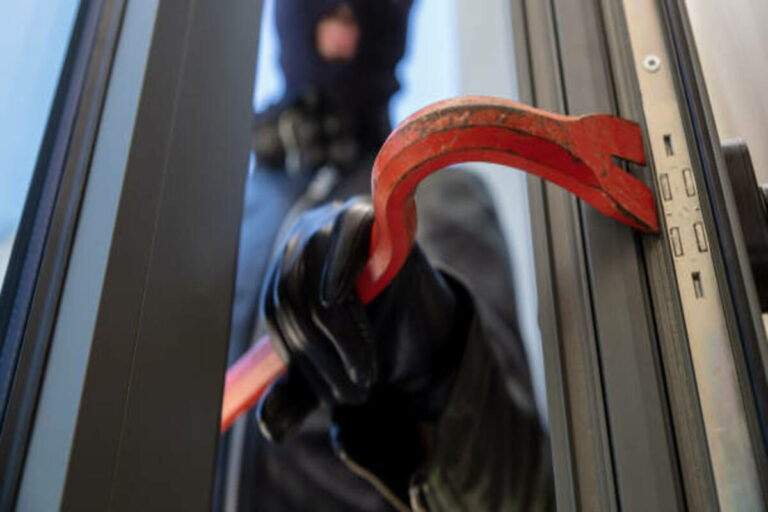Burglary of a Motor Vehicle Is Not the Same as Breaking Into a TX Home

In Texas, the legal landscape differentiates between burglary of a motor vehicle and breaking into a residence. While both crimes involve unauthorized access, they diverge markedly regarding severity, intended targets, and associated penalties. The burglary of a motor vehicle is primarily concerned with the illegal entry intending to commit theft or another felony, often without forced entry. On the other hand, home burglary is a second-degree felony, reflecting its potential to breach personal safety and security. This complex and nuanced difference invites a closer examination of the nature of these crimes and the legal responses they necessitate.
Understanding Texas Burglary Laws
While it may seem complex at first glance, understanding Texas burglary laws is essential for residents to safeguard their rights and interests. The Texas Penal Code defines burglary as unlawful entry into a building or habitation with the intent to commit a felony, theft, or assault. This definition extends to any enclosed area attached to a home or building, emphasizing the importance of secure property boundaries in burglary prevention.
However, Texas law differentiates between burglary of a building and burglary of a motor vehicle. For the latter, the offense occurs when one unlawfully breaks into or enters a vehicle with the intention of committing a felony or theft. This differentiation underscores the critical role vehicle security plays in preventing burglaries.
Furthermore, the penalties for these offenses also vary. A conviction for burglary of a habitation can result in a prison sentence of 2 to 20 years and a fine up to $10,000. On the other hand, burglary of a vehicle is generally classified as a Class A misdemeanor in Texas, punishable by up to one year in jail and a fine not to exceed $4,000. Understanding these laws can equip residents with the knowledge necessary to protect their property and legal interests.
Defining Burglary of a Motor Vehicle
Burglary of a Motor Vehicle, as designated under Texas law, is a distinct crime with specific elements that define its commission. This offense involves particular actions and circumstances which will be dissected for clearer understanding. Further, the legal repercussions and penalties associated with this crime will also be analyzed to provide a thorough view of its implications.
Legal Definition and Elements
In the domain of criminal law, the burglary of a motor vehicle is a distinctive offense with specific legal definitions and elements. This crime occurs when an individual crosses the threshold of someone else’s vehicle with the intent to commit a felony, theft, or assault. Importantly, the burglary intent must be present at the time of unlawful entry, or it cannot be considered burglary under Texas law.
Burglary of a motor vehicle also requires the vehicle to be a “habitation” or a “building” not open to the public. As opposed to home burglaries, motor vehicles do not necessarily have to be permanently affixed to a location. They can be mobile and still receive the same property protections under the law.
Unlike other types of burglary, the offender does not need to break into the vehicle forcibly. Unlawfully entering through an unlatched door or open window with the intent to commit a felony, theft, or assault, is sufficient to fulfill the legal definition of burglary of a motor vehicle. However, the prosecution must prove these elements beyond a reasonable doubt for a conviction.
Consequences and Penalties
Upon understanding the distinct legal parameters that define the burglary of a motor vehicle, one must also consider the subsequent legal repercussions. In Texas, this particular crime is categorized as a Class A misdemeanor, leading to penalties including a fine up to $4,000, and/or imprisonment for up to one year. However, if the offender has prior convictions, the charges may escalate to a state jail felony, carrying a potential sentence of 180 days to 2 years in a state jail and/or a fine of up to $10,000.
The victim impact of such crimes is significant, often resulting in substantial financial loss and personal distress. It is not merely the loss of property; victims may also experience a sense of violation and insecurity, leading to psychological trauma.
Crime statistics indicate a rising trend in motor vehicle burglaries in Texas, underscoring the need for stringent enforcement and deterrent measures. These figures, coupled with the legal repercussions, highlight the seriousness of this offense. As a result, understanding these consequences and penalties is essential for both potential perpetrators and the general public, as it emphasizes the high cost of committing such crimes.
Penalties for Vehicle Burglary in Texas
The Texas legal system imposes strict penalties for the burglary of motor vehicles, which are defined and regulated by specific state laws. These penalties can range from fines to imprisonment, depending on the severity and frequency of the offense. In the following analysis, we will systematically explore the range of penalties, the process for determining fines, and the potential jail time for offenders.
Texas Burglary Laws Overview
Steering through the intricacies of Texas burglary laws, one may uncover a distinct difference in penalties for vehicle burglary compared to breaking into a home. The underlying framework of these laws is designed with burglary prevention in mind, and the penalties associated with vehicle burglary are less severe than those for home burglary.
Theoretically, this differentiation reflects the different levels of invasion and violation experienced by victims of home and vehicle burglaries. The home, being a person’s sanctuary, is given more legal protection than a vehicle. However, this does not minimize the importance of vehicle security. In fact, the Texas legislature has enacted stringent laws to deter potential criminals and promote vehicle security.
Under Texas law, burglary of a motor vehicle is classified as a Class A misdemeanor, punishable by up to one year in jail and a fine not to exceed $4,000. On the other hand, home burglary is considered a second-degree felony, which carries a penalty of 2 to 20 years in prison and a maximum fine of $10,000.
These laws, consequently, serve to enforce the gravity of these crimes, whilst maintaining a distinct separation between vehicle and home burglaries.
Determining Vehicle Burglary Fines
Given the significant role vehicles play in our daily lives, it is essential to understand the penalties associated with vehicle burglary in Texas. In the Lone Star State, burglary of a motor vehicle is considered a property crime and is met with substantial fines that aim to deter potential offenders and compensate victims.
The financial penalty for vehicle burglary is determined by the severity of the offense and can range from a few hundred to several thousand dollars. In addition to these fines, offenders may also be held accountable for any damage incurred during the burglary. This could encompass damage to the vehicle, loss of property, and any related insurance claims.
Enhanced vehicle security plays a pivotal role in dissuading potential burglars. However, a successful break-in may lead to increased insurance premiums for the victim, adding financial insult to injury.
In order to mitigate the negative impacts of vehicle burglary, victims are encouraged to report the crime promptly, enabling law enforcement to apprehend the offender and potentially recover stolen property. This may also expedite any insurance claims, offsetting some of the financial burden carried by the victim.
Jail Time for Offenders
Moving beyond the financial implications of vehicle burglary in Texas, it’s imperative to shed light on the potential incarceration consequences faced by offenders. In Texas, burglary of a vehicle is classified as a Class A misdemeanor, and offenders can face up to a year in county jail. However, the jail time can considerably increase if the offender has previous convictions.
The rationale behind the imposed jail time is not just punitive but also aimed at offender rehabilitation. The Texas Department of Criminal Justice provides several rehabilitation programs for offenders, including educational, vocational, and substance abuse programs. These programs aim to reduce the recidivism rate by equipping offenders with the skills and knowledge necessary to lead law-abiding lives upon their release.
The length of the jail term often depends on the severity of the crime, the offender’s criminal history, and other factors that the court may consider relevant. However, it’s worth noting that while jail time deters crime, it’s the rehabilitation efforts that ultimately help in reducing the rate of vehicle burglary in the state. Consequently, the Texas criminal justice system combines punishment with rehabilitation to address vehicle burglary effectively.
Breaking Into a Home: The Legal Perspective
From the standpoint of the law, breaking into a home carries significant legal implications that far exceed those associated with a motor vehicle burglary. The home, viewed as a sanctuary, is legally protected by stringent measures that underscore the importance of home security.
The legal perspective on home burglary in Texas is shaped by the state’s penal code, which categorizes it as a second-degree felony. This classification is more severe than that of motor vehicle burglary, emphasizing the gravity of violating the sanctity of one’s residence.
Burglary prevention is a critical component in the legal discourse surrounding home invasions. The law encourages citizens to invest in robust home security systems, aiming to deter potential burglars and protect their homes. Homeowners who demonstrate proactive efforts towards burglary prevention may also find this reflected positively in the legal process, should a burglary occur.
Detailed understanding of the legal implications associated with home burglary can inform residents about the necessity of maintaining high home security standards, as well as the serious consequences faced by those who choose to ignore the law. This information underscores the importance of awareness and vigilance in preserving the safety and sanctity of one’s home.

Home Invasion Consequences in Texas
Despite common misconceptions, the consequences of home invasion in Texas are severe and multifaceted, reflecting the state’s stringent laws to protect residential sanctity. Home invaders can face hefty penalties including imprisonment, fines, and a long-lasting criminal record, depending on the specifics of the crime.
Analyzing crime statistics, one notes an increasing focus on home security in Texas. This emphasis has led to stringent enforcement of laws and severe penalties for home invasion. Besides the immediate legal implications, home invasion can lead to social and economic consequences. A felony conviction can greatly limit employment opportunities, thereby impacting an individual’s potential income and economic stability.
Furthermore, home invasion suspects may face enhanced charges if the crime includes aggravating factors such as possession of a weapon, causing physical harm, or committing the crime in the presence of a child. These factors can notably elevate the severity of the punishment, underlining the state’s commitment towards safeguarding its citizens’ home security.
Key Differences Between The Two Offenses
In light of the aforementioned consequences of home invasion, it is imperative to distinguish it from another common offense – burglary of a motor vehicle. Both crimes violate property protection rights, but they differ greatly regarding their legal interpretations, penalties, and societal impacts.
Motor vehicle theft typically involves the unlawful entry of a vehicle with the intent to commit a felony or theft. Unlike residential burglary, it does not necessarily involve trespassing on private real estate. The primary aim is often to steal the vehicle itself or valuable items within it.
Conversely, home invasion is a more severe crime in Texas due to its invasive nature, posing a direct threat to personal safety and security. It involves breaking into a dwelling with the intent to commit a felony, such as theft or assault, therein. This crime is considered more heinous due to potential physical harm to occupants, leading to harsher penalties.
While both offenses are considerable violations of property protection, their distinct features necessitate different legal and societal responses, underlining the importance of understanding their differences.
Preventive Measures Against Burglaries
Understanding the preventive measures against burglaries is vital to safeguarding personal property and ensuring safety. Implementing home security systems, including alarms and surveillance systems, can act as a significant deterrent to potential criminals. These technologies can alert homeowners to unauthorized entry attempts, allowing for quick action and potentially stopping a theft in progress.
In addition to home security, community awareness plays a key role in crime prevention. A neighborhood watch program can be an effective way to reduce burglaries. Such programs involve residents working together to report suspicious activity, creating a network of vigilance that can discourage criminals.
Vehicle safety is also paramount. This includes locking doors, closing windows, and not leaving valuable items visible inside the car. Additionally, installing anti-theft systems can provide an extra layer of protection.
Beyond these direct prevention strategies, insurance coverage is a vital component of an all-encompassing protection plan. While insurance cannot prevent a burglary, it can mitigate the financial impact if one does occur.
Frequently Asked Questions
What Are the Steps to Report a Motor Vehicle Burglary in Texas?
To report a motor vehicle theft in Texas, first guarantee your safety, then identify and document all missing items. Immediately contact the local police to file a report, detailing the incident thoroughly.
Can You Be Charged With Burglary for Entering an Unlocked Car in Texas?
In Texas, entering an unfastened vehicle with the intent to commit a felony, theft, or assault is considered vehicle theft, a form of burglary. Consequently, you can indeed be charged even if the car was unfastened.
What Resources Are Available for Victims of Home Burglaries in Texas?
In Texas, victims of home burglaries can access resources such as community support programs and victim assistance services. These offer counselling, financial aid, and help maneuvering the legal process to restore security and peace of mind.
Is the Legal Process Different for Minors Charged With Vehicle or Home Burglary?
Yes, the legal process differs for minors involved in vehicle or home burglary cases in Texas. The juvenile justice system handles these cases, with varying burglary penalties based on the severity of the crime committed.
What Are Some Examples of Successful Defenses Against Burglary Charges in Texas?
Successful defenses against burglary charges in Texas often incorporate self-defense strategies and consent defenses. These strategies focus on proving lack of intent, permission to enter the property, or necessity due to emergent circumstances.






